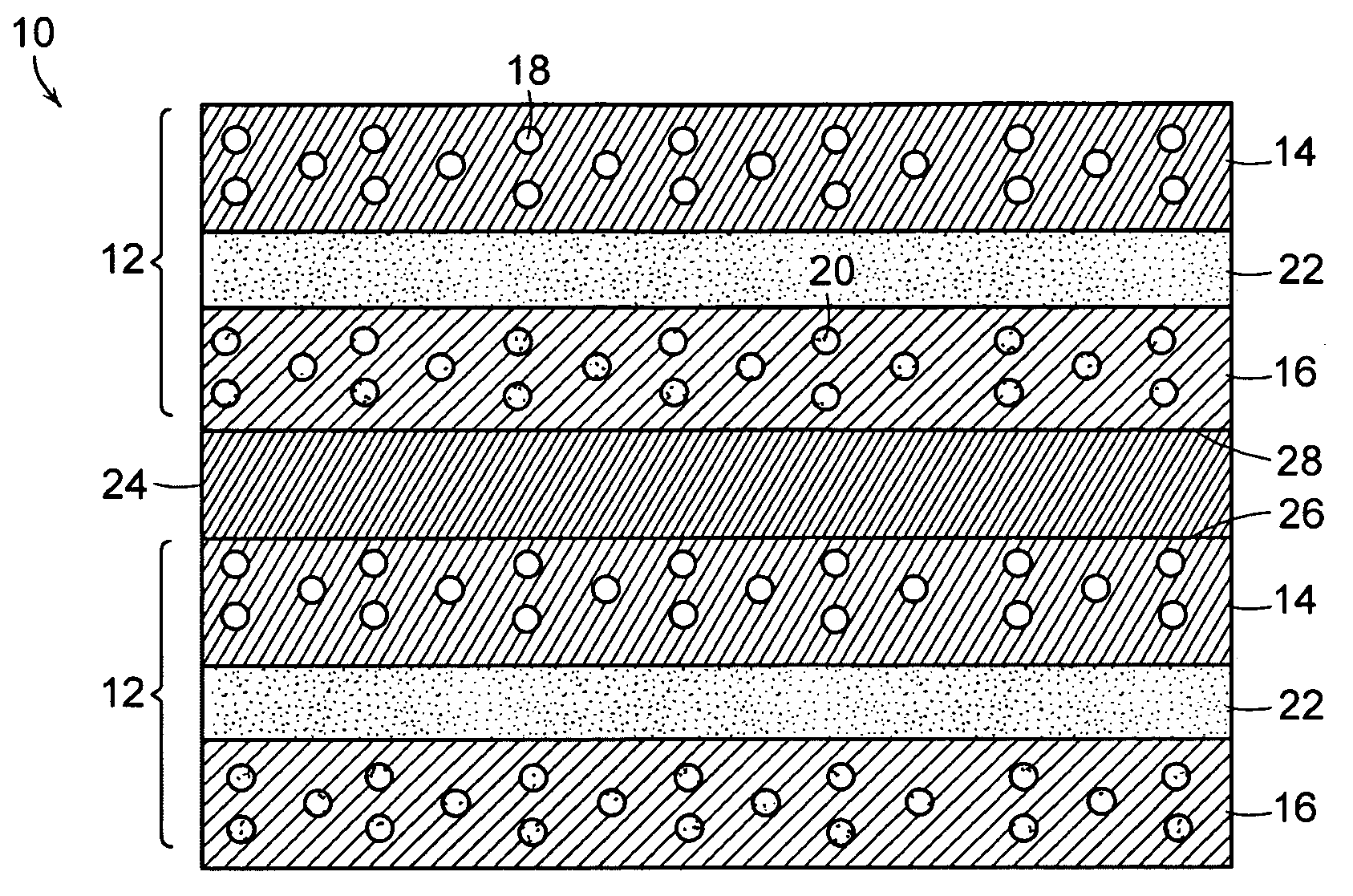Titanate and metal interconnects for solid oxide fuels cells
- Summary
- Abstract
- Description
- Claims
- Application Information
AI Technical Summary
Benefits of technology
Problems solved by technology
Method used
Image
Examples
Embodiment Construction
[0015]The foregoing will be apparent from the following more particular description of example embodiments of the invention, as illustrated in the accompanying drawings in which like reference characters refer to the same parts throughout the different views. The drawing is not necessarily to scale, emphasis instead being placed upon illustrating embodiments of the present invention.
[0016]FIG. 1 shows fuel cell 10 of the invention. Fuel cell 10 includes a plurality of sub-cells 12. Each sub-cell 12 includes first electrode 14 and second electrode 16. Typically, first and second electrodes 14 and 16 are porous. In fuel cell 10, first electrode 14 at least in part defines a plurality of first gas channels 18 in fluid communication with a source of oxygen gas, such as air. Second electrode 16 at least in part defines a plurality of second gas channels 20 in fluid communication with a fuel gas source, such as H2 gas or a natural gas which can be converted into H2 in situ at second elect...
PUM
| Property | Measurement | Unit |
|---|---|---|
| Thickness | aaaaa | aaaaa |
| Thickness | aaaaa | aaaaa |
| Thickness | aaaaa | aaaaa |
Abstract
Description
Claims
Application Information
 Login to View More
Login to View More - R&D
- Intellectual Property
- Life Sciences
- Materials
- Tech Scout
- Unparalleled Data Quality
- Higher Quality Content
- 60% Fewer Hallucinations
Browse by: Latest US Patents, China's latest patents, Technical Efficacy Thesaurus, Application Domain, Technology Topic, Popular Technical Reports.
© 2025 PatSnap. All rights reserved.Legal|Privacy policy|Modern Slavery Act Transparency Statement|Sitemap|About US| Contact US: help@patsnap.com



